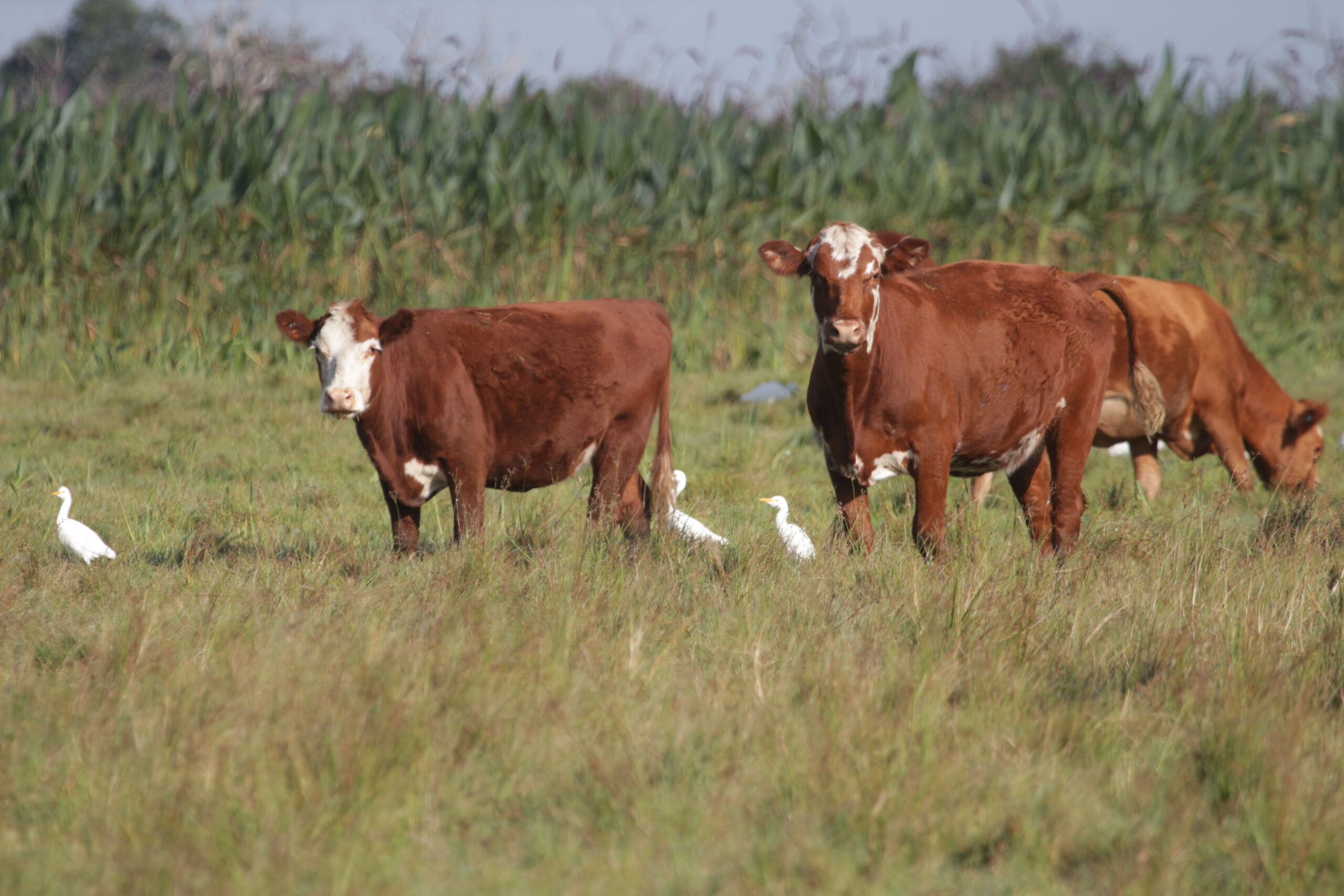desplazamiento
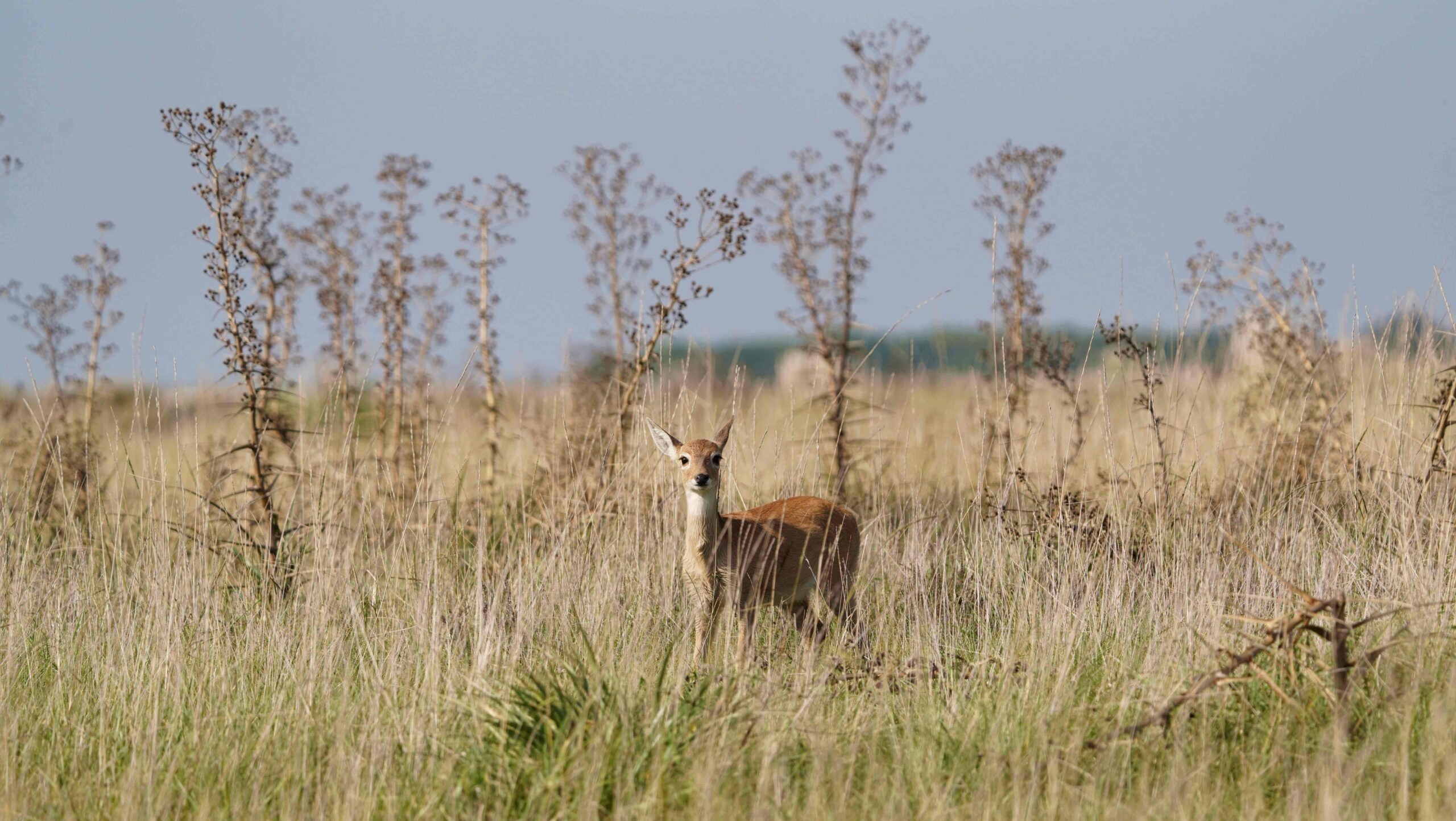
When people think of natural climate solutions, they often picture forests. But there’s another ecosystem quietly storing a vast share of carbon. Grasslands, including rangelands, savannas, and shrublands, blanket roughly half of Earth’s land surface, sustain billions of people, and support rich local biodiversity. Beneath the familiar sweep of grasses lies a dense architecture of roots and microbes that functions as a living pump—drawing down atmospheric CO₂ and storing it as stable soil organic matter.
At a time when humanity must remove 220–360 gigatons of CO₂ by 2100 to stabilize the climate (IPCC AR6 WG III, 2022), restoring the planet’s grasslands offers one of the most scalable and cost-effective solutions available.
Land degradation is widespread—and accelerating. The UNCCD estimates that up to 40% of the planet’s land is already degraded, and roughly half of the world’s natural pastures are stressed by overuse and climate extremes. Without intervention, degradation could affect as much as 90% of land by 2050. When grasslands lose vegetation and soil structure, they stop storing carbon and start releasing it—turning a natural carbon sink into a carbon source and accelerating climate change.
The costs go far beyond lost carbon: degraded grasslands drain productivity, accelerate desertification, undermine water security, and erode biodiversity—from soil microbes and pollinators to ground-nesting birds and grazing wildlife. The result is mounting community strain as pastoral livelihoods falter and vulnerability rises.
By improving land management practices, these same landscapes can recover—storing carbon reliably and supporting stronger, more resilient communities.
Grasslands are natural carbon removal machines. Through photosynthesis, plants capture CO₂ and route a large share belowground into root systems and ultimately soil organic matter (SOM). Because grasslands store the majority of their carbon belowground in roots and soil, their carbon stocks are more resilient to fire and drought than aboveground forest biomass. Across climates and soils, restored grasslands can sequester ~0.5–3e per hectare per year, with outcomes driven by rainfall, texture, baseline condition, and management. Because of their scale—billions of hectares worldwide—grasslands offer a multi-gigaton opportunity for carbon removal and climate adaptation.
We can learn from nature—and accelerate this process with thoughtful, regenerative management.
Regenerative land management increases soil carbon on grasslands by reshaping how plants grow and how soils function, improving both productivity and practice, that means matching stocking rates to forage, rotating herds to create planned rest, spreading water and shade points so animals distribute nutrients more evenly, reseeding or protecting deep-rooted perennials, and curbing invasive annuals and erosion. These shifts lengthen the photosynthetic season, raise root-to-shoot ratios, and increase below-ground inputs that form stable soil aggregates—while better cover and litter slow oxidation and keep moisture where plants can use it. The result is steady gains in soil organic matter and a more drought-resilient, productive grassland that continues to accumulate carbon year after year.
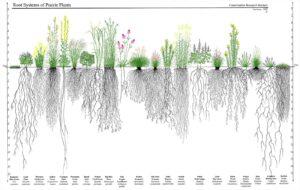
Root Systems of Prairie Plants (Heidi Natura, Conservation Research Institute, 1995). A cross-section compares shallow turf grass roots with the deep, fibrous roots of native prairie species. The drawing emphasizes the exceptional depth and density of prairie roots, which support drought resilience, soil stability, and long-term carbon storage.
Boomitra’s grassland restoration projects—spanning Northern Mexico, América del Sur, y East Africa—are restoring soil and removing carbon at scale.

Across the Chihuahuan and Sonoran deserts in Northern Mexico, ranching communities are restoring ground cover, lengthening rest periods, and bringing life back to grasslands—turning once-barren pastures into resilient, carbon-sequestering ecosystems that support both cattle and wildlife.
“It’s impressive how you give something to the land, and it gives you back something very beautiful.” — Javier Mesta, Don Tachin Ranch, Aldama, Mexico
In grasslands across Argentina and Paraguay, producers are reviving deep-rooted grasses and careful grazing rhythms so soils can breathe again. As a result, flowers are returning, forage is recovering, biodiversity is flourishing, and communities see a future on the land.
“I’m fascinated by the land’s ability to repair itself. Yellow, white, violet, and red flowers bloom on previously barren land and butterflies have returned.” — Daniela Pardo Méndez, La Siempre Viva Ranch, San Luis, Argentina
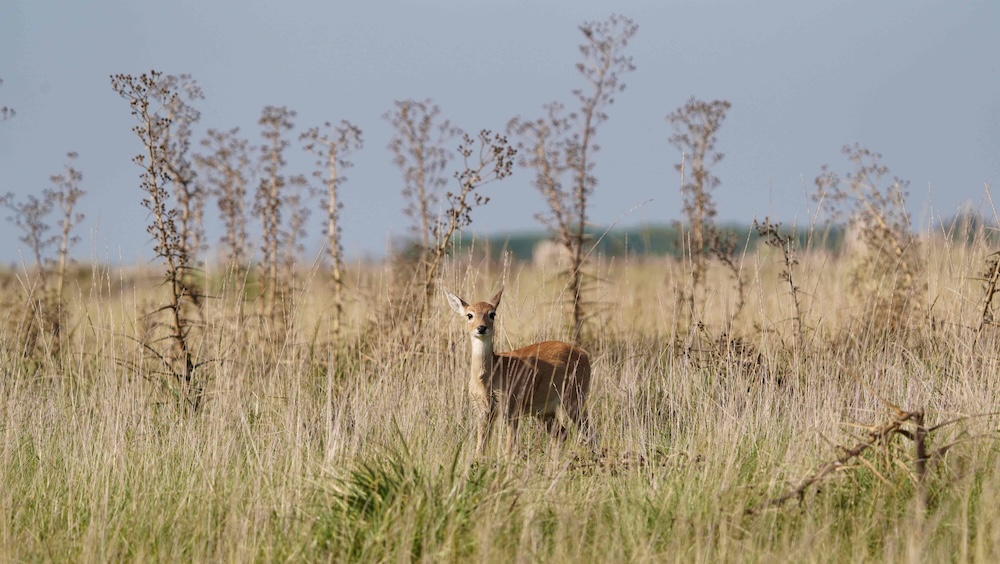
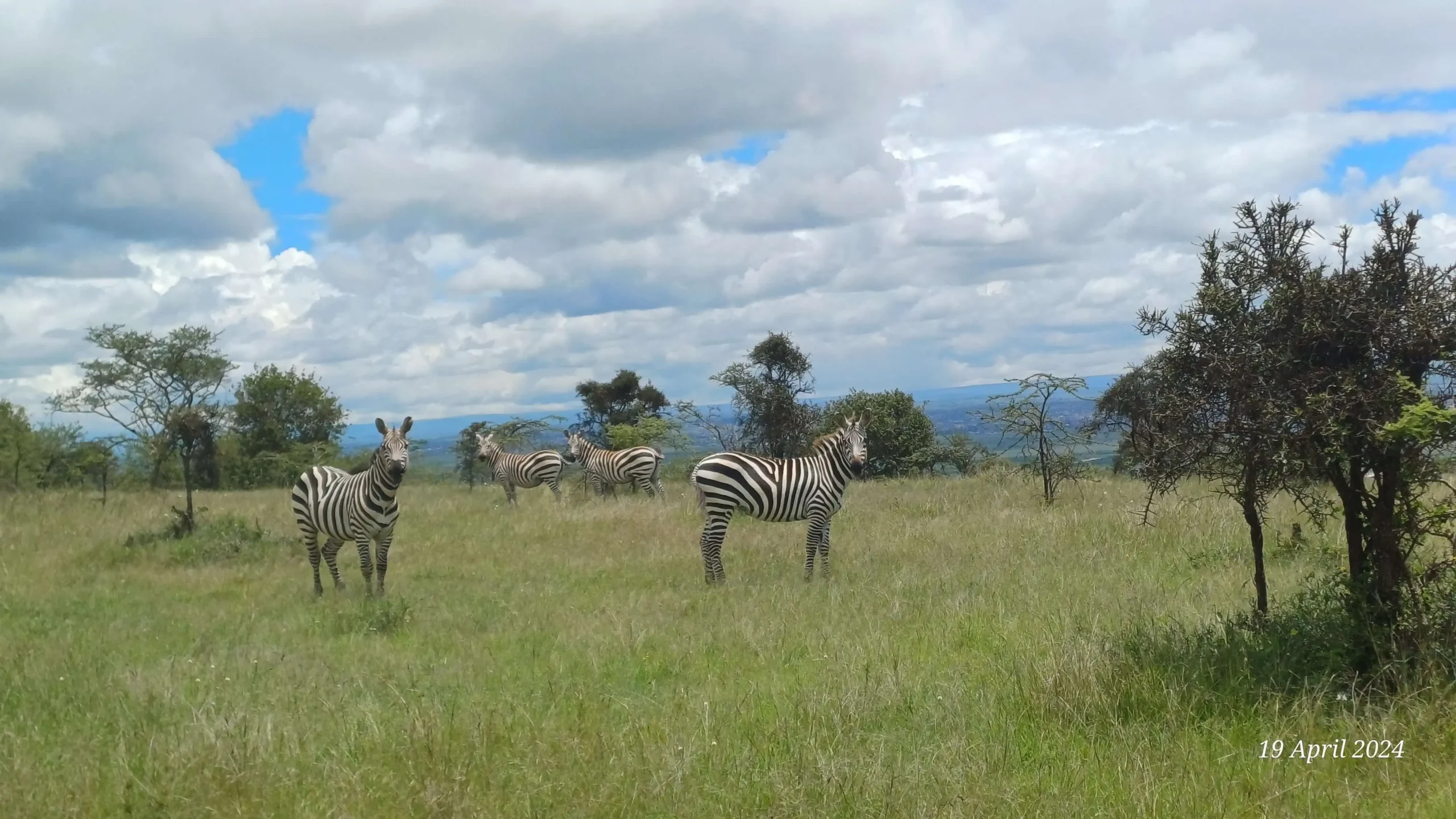
In Kenya’s semiarid rangelands, pastoralist leaders are matching herds to forage and planned rest, restoring soils and grass cover while strengthening drought resilience and livelihoods. At Lisa Ranch, the team has already seen wildlife return to the rested pastures.
“We realize all of these animals are important for the whole ecosystem.” — Francis Munene, Lisa Ranch, Makueni County, Kenya
Boomitra measures increases in soil carbon with our third-party verified remote sensing technology. By combining on-the-ground soil sampling with satellite data and AI models we track how much carbon is added to the soil over time. Independent verifiers review this data to confirm the results. Once the increase in soil carbon is validated, each additional tonne of CO₂ stored in the soil becomes one carbon credit. Those credits are then purchased by companies, organizations, and governments looking to meet credible climate goals, creating a new income stream for the producers restoring their land.
Dig deeper into how we measure soil carbon from space.
Restoring grasslands strengthens far more than carbon stocks—it rebuilds resilience. Healthy soils hold more water, reduce erosion, and support richer plant and wildlife communities. For producers, this means steadier forage, reduced vulnerability to drought, and more reliable livelihoods. For ecosystems, it means restored biodiversity, improved watershed health, and landscapes that can better withstand heat and climate extremes.
When grasslands thrive, so do the people and wildlife that depend on them. Regenerative land management sustains food, culture, and economies—while strengthening nature’s capacity to adapt in a changing climate.
Often overlooked, grasslands hold outsized potential. They are the foundation of food systems, a backbone for pastoral communities, and one of our most scalable tools for carbon sequestration.
By combining local knowledge, regenerative management, and advanced technology, Boomitra and its partners are showing what’s possible: millions of acres restored, verified carbon removals, and thousands of producers empowered.
Healing grasslands heals more than land—it restores hope, stability, and life beneath our feet.
Scaling regenerative grasslands requires collaboration. Governments, organizations, and producers each play a role. Connect with us to explore partnership pathways.
Photo credit for hero image: Pablo Grilli


